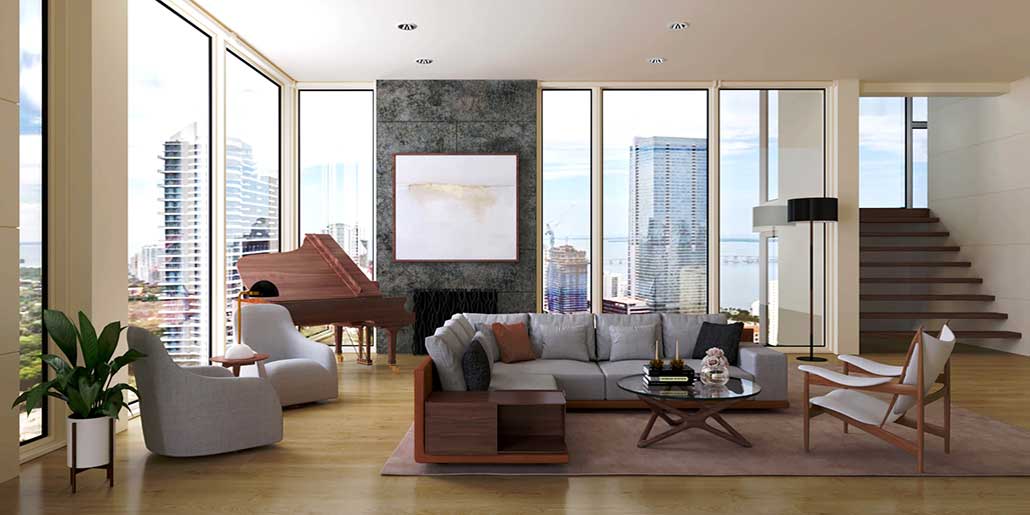The term “modern furniture” is used to describe pieces made between the late 19th and early 21st centuries that reflect the aesthetic principles of modernism. The appearance of the furniture was greatly influenced by post-World War II ideas of minimalism, commodity, and material efficiency. It was a radical change from any previous style of furniture. Types like Art Nouveau, Neoclassicism, and Victoriana, all part of the decorative arts, were met with resistance.
Polished metal replaced ornately carved dark or gilded wood and fabrics with complex patterns. Over time, modern furniture designs went from being visually weighty to airy. The advent of cutting-edge technologies, philosophical shifts, and architectural influences all played a part in the gradual transition from ornate to minimalist design principles. Philip Johnson, who established the Museum of Modern Art’s Division of Architecture and Design, puts it this way.
Advantages of Modern Furniture
Different people have different ideas of what furniture is. Most people think of furniture as enormous, portable objects that aid human endeavors. Kitchen counters, bar stools, and chairs all fit the bill as “furniture” according to this definition.

Furniture can also be considered supplementary parts and pieces that hold together more significant pieces of equipment and furniture—hardware storage solutions such as mount racks, equipment stands, and the like fall under this category. The modern aesthetic is frequently used in creating the furniture above categories. How is this mode unique from others, and what are its characteristics? The following are five of its best qualities that make it so popular in households and businesses.
It’s all about function, not form.
In the context of contemporary furnishings, this slogan ranks among the most memorable. Following the proclamation “form follows function,” today’s furniture is built to do its job efficiently. For many shoppers, functionality is more important than aesthetics.
Workstations, office chairs, high chairs for infants and toddlers, bookshelves, and many more items are all instances of furniture for sale where utility is prioritized over aesthetics. As well as steps guide on buying living room sectionals.
Versatile and modifiable
The goal of the contemporary aesthetic in the workplace is to maximize efficiency and output. Today’s workplaces are more open and collaborative than in the past when employees were expected to stay still and focus solely on their tasks. Modern furniture, with its many adjustable parts, complements this adaptability.
Therefore, modern furniture is designed to suit the various settings workers may need, whether the task calls for solo work or collaborative work with a group of people. Adaptability is also helpful in various environments, such as classrooms, churches, and even cafes and offices. Furniture like folding or adjustable tables, moveable classroom desks, room dividers, and others make it possible to rapidly and easily rearrange the furniture in a room, significantly increasing the space’s adaptability.
Subtle and Elegant
Modern furniture stores has endured despite the fads brought about by newer styles because it is so straightforward. Because of this quality, they are adaptable to any decor, which is excellent for homeowners and business owners who often change things up.
Plus, contemporary pieces are a synthesis of understated elegance and functionality. Even though they aren’t particularly ornamental, they still have a certain visual appeal, especially to those who prefer simple styles. Sofas for the office, storage units, wardrobes, and dining tables are commonplace furniture that benefits from a minimalistic, elegant design.
Colours that are found in nature and are neutral
Modern pieces of furniture are easily recognizable by their use of a colorless palette. Whereas traditional furniture could feature vivid or metallic colors, modern pieces tend to stick to more subdued tones. Therefore, these furnishings have a more organic look and feel and complement many other furniture, equipment, and design aspects with relative ease.
Conclusion
The modernist aesthetic emerged in the early twentieth century. Steel, vinyl, leather, and plastic are some of the most iconic materials of this style. This article focuses on a specific type of modern furniture stores. Remember to check back for similar material in the future.


